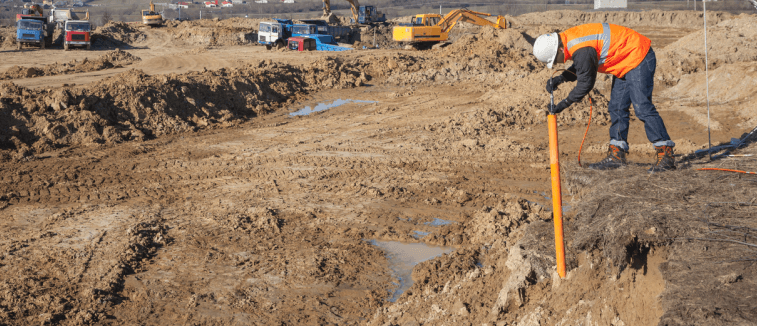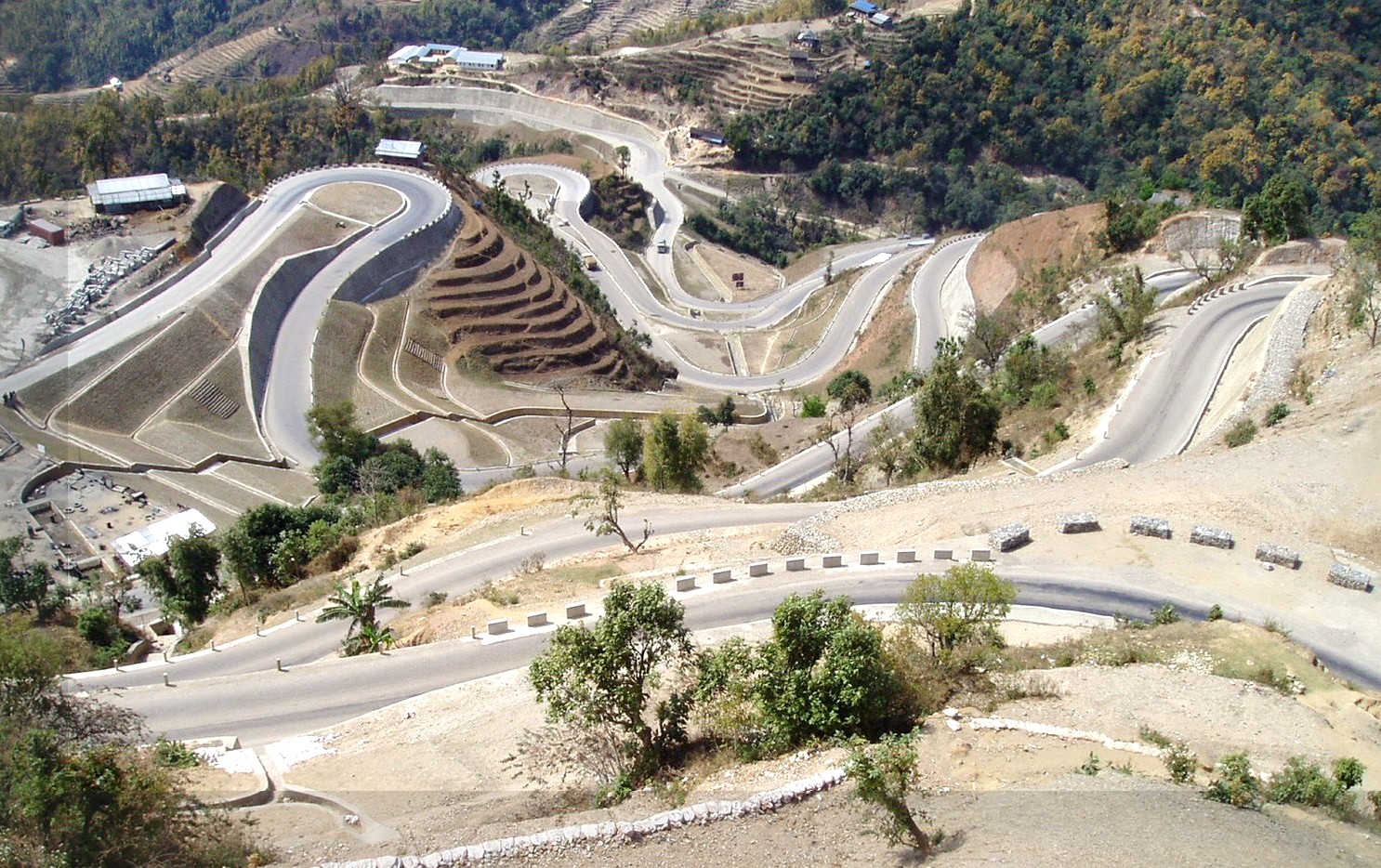Exploring the Basic Principles and Applications of Geotechnical Design for Lasting Framework Development
The crossway of geotechnical design and sustainable facilities growth presents a compelling possibility to boost both layout efficiency and ecological responsibility. By understanding vital concepts such as soil auto mechanics, website characterization, and foundation style methods, designers can produce services that are not just reliable yet additionally reduce eco-friendly impacts.
Trick Principles of Geotechnical Engineering
Recognizing the essential principles of geotechnical engineering is essential for creating sustainable infrastructure (geotechnical companies in south africa). This technique concentrates on the communication in between dirt, rock, and structures, playing a vital role in the stability and performance of design projects. The primary concept is the evaluation of subsurface problems through website examinations, which provide useful info concerning soil properties, stratification, and groundwater degrees
An additional essential concept is the application of reliable tension concept, which helps designers understand how soil habits changes under varying tons. This understanding is vital for reviewing the bearing ability of structures and making sure that frameworks can stand up to both static and vibrant forces.
Furthermore, the principles of soil-structure communication and incline stability are essential to geotechnical style, as they inform choices on the positioning and style of retaining walls, inclines, and embankments.
Lastly, geotechnical engineers need to think about sustainability by advertising making use of locally sourced materials, reducing environmental influence, and optimizing layouts for longevity. By adhering to these concepts, geotechnical engineering contributes significantly to the development of durable and lasting framework that fulfills the needs of society while securing the setting.
Soil Mechanics and Its Significance
Soil auto mechanics functions as the structure of geotechnical engineering, giving the clinical principles needed to evaluate the actions of dirt under various problems. Recognizing soil mechanics is essential for anticipating how dirt will certainly reply to loads, adjustments in moisture content, and other environmental aspects. This knowledge allows designers to develop structures that can hold up against the pressures put in by the soil and ensure stability and security.
The study of soil auto mechanics includes numerous aspects, consisting of dirt category, shear permeability, compressibility, and strength. These variables affect the layout of structures, preserving walls, and various other geotechnical frameworks, making it necessary to analyze dirt buildings precisely. The shear strength of soil straight affects the security of excavations and slopes, while compressibility impacts settlement forecasts for structures.
In addition, soil technicians plays an important role in sustainable framework growth. By comprehending the soil's behavior, engineers can minimize ecological influences, optimize material use, and boost the longevity of structures. This combination of soil mechanics right into geotechnical engineering techniques not only makes certain security yet additionally adds to the total sustainability of building and construction jobs, advertising efficient source monitoring and ecological stewardship.
Website Characterization Strategies
Efficient website characterization strategies are critical for collecting important details regarding subsurface conditions before construction - geotechnical engineer description. These strategies offer important understandings right into dirt homes, rock formations, groundwater degrees, and prospective geohazards, thereby notifying project style and mitigating risks
One commonly used technique is drilling, which permits direct sampling of soil and rock layers. This can be matched by in-situ testing, such as Standard Penetration Tests (SPT) and Cone Penetration Tests (CPT), to evaluate dirt strength and stratification. Geophysical approaches, including seismic refraction and electric resistivity studies, enable non-invasive assessment of subsurface products and frameworks, providing a more comprehensive point of view on geological problems.
Moreover, research laboratory testing plays an essential role in examining soil examples click obtained from drilling. Examinations such as grain size evaluation, Atterberg limits, and triaxial shear tests produce critical data on soil behavior under numerous loading conditions.
Incorporating these website characterization methods not only enhances the understanding of site problems but likewise supports lasting facilities development by making certain that tasks are created with proper safety margins and performance specifications. Therefore, a comprehensive site characterization is crucial for notified decision-making in geotechnical design.
Foundation Style Methods
Foundation layout approaches are crucial for making certain the security and longevity of frameworks in numerous geotechnical contexts. These methods begin with a complete site investigation, that includes soil screening and evaluation to figure out the physical residential properties of the subsoil. Understanding soil actions under lots is critical for picking the ideal structure type, whether shallow or deep.
Shallow structures, such as spread footings or floor covering foundations, are normally utilized when suitable dirt layers are readily available find more info near the surface. These foundations distribute loads over a bigger location, lowering the risk of too much settlement. Conversely, deep foundations, such as stacks or drilled shafts, are made use of in circumstances where surface dirts are insufficient to support structural loads. They transfer lots to much deeper, much more secure soil or rock layers.

Sustainable Practices in Geotechnical Design
The combination of sustainable practices in geotechnical engineering plays a pivotal function in enhancing the ecological and financial practicality of facilities jobs. By focusing on source effectiveness and decreasing ecological impacts, designers can contribute to the growth of resistant infrastructure systems.
One secret lasting method entails the usage of alternative materials, such as recycled aggregates and industrial by-products, which can reduce the need for virgin sources and lower carbon discharges. In addition, soil stabilization methods, consisting of the application of bioengineering methods, improve soil residential or commercial properties while advertising ecological balance.
Furthermore, the application of innovative geotechnical modeling and surveillance modern technologies see this enables much better forecast and monitoring of ground conditions, leading to enhanced design services and resource utilization. These technologies likewise facilitate the evaluation of long-term efficiency, making certain that frameworks remain secure and practical over their lifespan.

Final Thought
In verdict, the concepts and applications of geotechnical engineering play an essential duty in lasting infrastructure advancement. Highlighting soil technicians, website characterization, and ingenious foundation design strategies boosts the resilience and performance of frameworks.
By understanding vital principles such as soil technicians, site characterization, and foundation design techniques, engineers can create remedies that are not only effective but likewise decrease environmental footprints.Dirt mechanics serves as the foundation of geotechnical engineering, giving the scientific principles needed to assess the behavior of soil under different conditions. Understanding soil mechanics is important for predicting exactly how soil will certainly react to loads, changes in moisture web content, and other ecological aspects.The research study of soil auto mechanics encompasses various facets, consisting of dirt category, shear compressibility, leaks in the structure, and toughness. These elements affect the design of structures, maintaining wall surfaces, and various other geotechnical frameworks, making it important to assess soil properties precisely.
Comments on “Top Factors to Employ a Geotechnical Specialist for Your Construction Jobs”